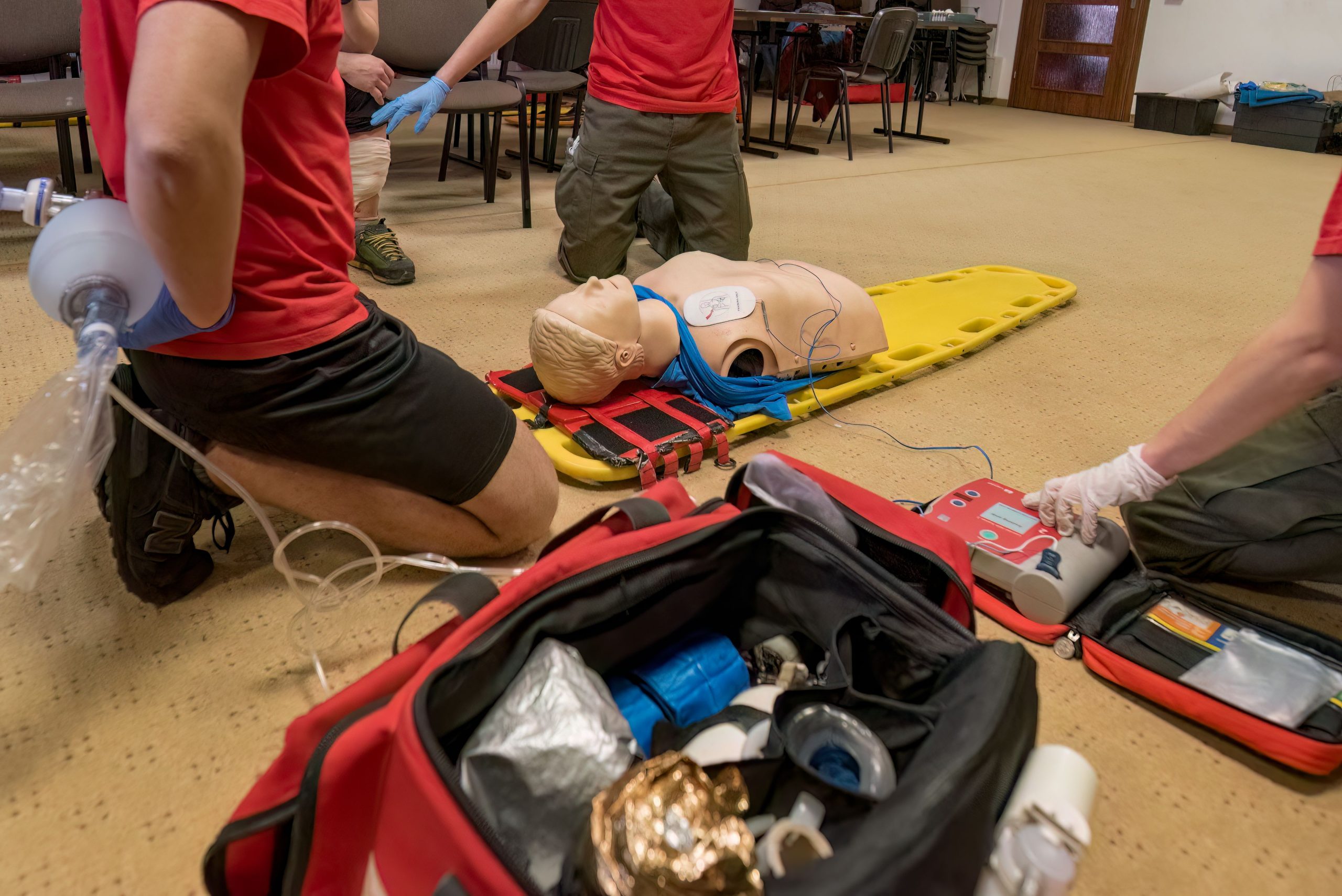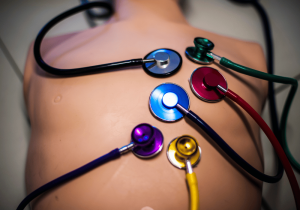
Menu
Close
Emergencies arise when we least expect them, and effective medical training is crucial for saving lives. A key component of such training lies in the use of rescue manikins. These lifelike models are designed to simulate real-world emergencies, providing trainees with the hands-on experience needed to respond swiftly and accurately in critical moments. Selecting the right manikin isn’t just a matter of convenience; it’s a decision that can significantly impact the quality and standard of care provided in life-saving situations.
High-quality rescue manikins with realistic features prepare students to handle varying scenarios, instilling confidence and competence when the stakes are high. This article will provide an in-depth guide to understanding rescue manikins, their features, types, and benefits, as well as how to maintain them for optimal performance.
 When investing in rescue manikins, it’s essential to select models that meet both practical and educational needs. Durability and material quality should be a top priority, as manikins are frequently used in high-intensity training sessions. Manikins made from advanced, tear-resistant materials can withstand continuous practice without wearing out, ensuring they remain a reliable training tool for years. Furthermore, look for models that offer ease of maintenance while resisting damage from repetitive use, which is common in classrooms, clinics, and field settings.
When investing in rescue manikins, it’s essential to select models that meet both practical and educational needs. Durability and material quality should be a top priority, as manikins are frequently used in high-intensity training sessions. Manikins made from advanced, tear-resistant materials can withstand continuous practice without wearing out, ensuring they remain a reliable training tool for years. Furthermore, look for models that offer ease of maintenance while resisting damage from repetitive use, which is common in classrooms, clinics, and field settings.
Another critical feature to assess is anatomical accuracy. High-quality manikins replicate human body structures with impressive detail, including airway passages, chest rise, and rib cages. These features allow trainees to practice complex skills such as intubation, chest compressions, or ventilations with lifelike precision. Accurate anatomical landmarks enable realistic positioning and technique, ensuring readiness when faced with actual patients. The more life-like the rescue manikin, the better the training outcomes for learners.
Finally, consider functionality that supports varied rescue scenarios. Many modern manikins are designed for practicing techniques beyond basic CPR, such as Automated External Defibrillator (AED) operation, choking relief, or trauma response. Versatility in functionality broadens the scope of medical training, making it possible to simulate everything from cardiac events to severe injuries. By investing in function-rich manikins, organizations can prepare trainees for an array of medical situations, enhancing both individual and team proficiency.
Rescue manikins come in various types to suit specialized training needs, each offering distinct advantages. Full-body manikins are among the most versatile options, designed to simulate the complete human form. These comprehensive models are ideal for advanced trauma care, search-and-rescue operations, and other scenarios where lifelike motion and full-body handling are essential. Many full-body manikins also feature articulated joints, allowing for the realistic replication of movements such as lifting, dragging, and rolling, which are especially critical in paramedic and firefighter training.
Torso-only manikins, on the other hand, provide a more focused and compact training experience. These models are specifically designed for CPR and basic airway management practice, offering precision in areas like chest compressions and artificial ventilation techniques. Torso-only manikins are an excellent choice for classroom settings or organizations that aim to target specific skill sets without the need for a full-body simulation. Their lightweight design also makes them easier to store and transport without compromising on quality.
Pediatric and infant manikins, meanwhile, are essential for training healthcare providers in child-specific emergency care. These smaller-scale models mimic the anatomical details of babies and young children, allowing trainees to develop critical skills for handling pediatric emergencies, including infant CPR, airway clearance techniques, and neonatal resuscitation. Given that children require different care and smaller equipment, these specialized manikins ensure trainees are adequately prepared to effectively address the unique challenges of pediatric care.
 Rescue manikins featuring advanced technology provide an entirely new dimension to medical training. One of the most significant advancements in manikin design is the inclusion of wireless feedback capabilities. Real-time performance assessments enable instructors and trainees to monitor the effectiveness of techniques such as depth and speed of chest compressions, ventilation rates, and hand placement during CPR. These immediate corrections help participants refine their techniques systematically, leading to more accurate and effective interventions.
Rescue manikins featuring advanced technology provide an entirely new dimension to medical training. One of the most significant advancements in manikin design is the inclusion of wireless feedback capabilities. Real-time performance assessments enable instructors and trainees to monitor the effectiveness of techniques such as depth and speed of chest compressions, ventilation rates, and hand placement during CPR. These immediate corrections help participants refine their techniques systematically, leading to more accurate and effective interventions.
Simulated vital signs and automatic responses further elevate the training experience by mimicking authentic patient conditions. Certain manikins may display fluctuating heart rates, respiratory signals, or reactive pupils to mimic distress, giving trainees the opportunity to make split-second decisions in real-life settings. By incorporating advanced sensory technology, manikins can challenge students to respond dynamically, bridging the gap between theoretical knowledge and hands-on application.
Another crucial feature is the ability to track performance data over time. Many advanced manikins are equipped with software that records and analyzes training sessions. This data can be used to identify strengths, highlight areas for improvement, and assess overall skill progression. Data tracking fosters accountability in medical curriculum and provides a clear roadmap for continuous development, helping trainees achieve a higher standard of proficiency.
Keeping rescue manikins in optimal condition is vital to prolong their usability and maintain hygienic standards, especially in group training environments. One of the most important aspects of maintenance is regular cleaning and disinfecting. Use manufacturer-recommended cleaning agents to sanitize surfaces after each session, paying special attention to areas like the airway and chest where physical contact occurs most frequently. Proper cleaning not only ensures hygiene but also prevents material degradation caused by accumulated dirt or sweat.
Storage also plays a significant role in extending the lifespan of rescue manikins. Always store manikins in a clean, dry space away from direct sunlight or extreme temperatures, which can warp or weaken materials. Utilizing carrying cases or protective covers can shield manikins from dust and accidental damage during transport or when not in use. Following these guidelines preserves the structural integrity of the manikins, ensuring they remain effective training tools for years to come.
Lastly, addressing wear and tear proactively can prevent minor problems from escalating into serious issues. Most manufacturers offer replacement parts for components like airways, faces, or chest compression plates, allowing you to repair manikins rather than replacing them entirely. Keep an inventory of commonly needed spare parts and schedule periodic inspections to address potential concerns early. Routine maintenance safeguards both the quality and functionality of rescue manikins, keeping your training sessions efficient and uninterrupted.
Rescue manikins are more than just teaching tools; they are lifelike models that bridge the gap between theoretical instruction and real-world application. From their durability and anatomical accuracy to advanced technological features, these tools play a critical role in preparing trainees to face the challenges of emergency medical care. By carefully selecting and maintaining the right manikins for your needs, you ensure that every training scenario is as realistic and effective as possible.
At CPR Depot Canada, we are proud to offer a wide selection of high-quality rescue manikins that meet the diverse needs of medical training professionals. Explore our collection today to find the perfect manikins for your organization, and take the first step toward elevating your training program. Visit our website to learn more and start training with confidence.